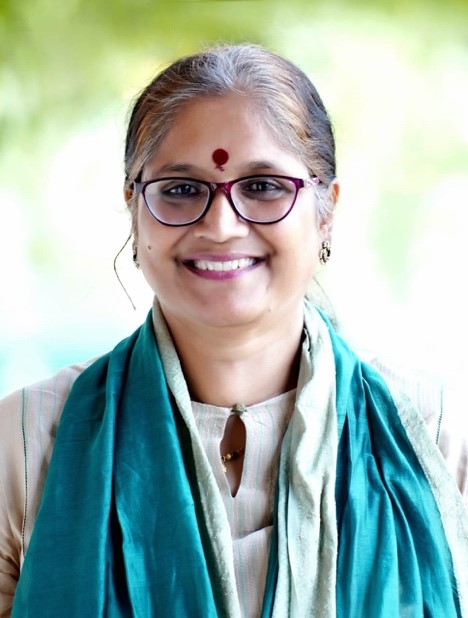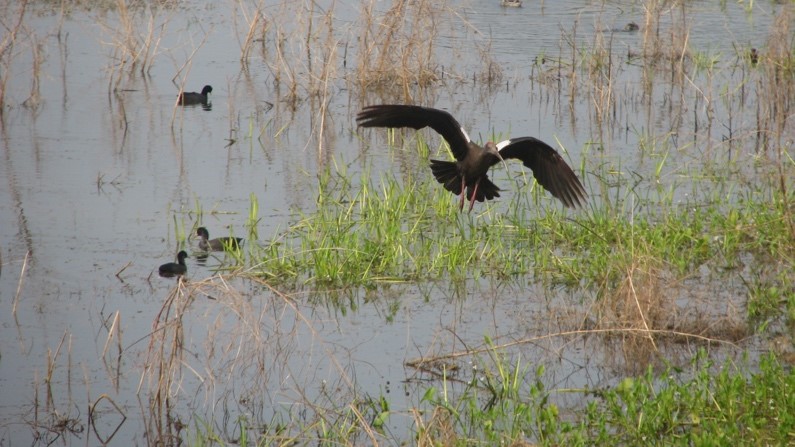Dear Readers,
As we anticipate the arrival of Women’s Day, we are excited to continue our tradition of honoring the remarkable women who form the backbone of our organization. These women enrich our lives and communities each day with their unwavering courage, resilience, and determination. However, on this special occasion, we feel compelled to shine a spotlight on their individual stories and experiences, amplifying their voice and celebrating their unique journeys.
We are honoured to have Ms. Paromita Goswami join us this year. As a distinguished lawyer and writer, she brings a wealth of expertise and a deep-rooted passion for social justice. Ms. Goswami has graciously engaged with a select group of women from our workforce to document their inspiring narratives.
writer, she brings a wealth of expertise and a deep-rooted passion for social justice. Ms. Goswami has graciously engaged with a select group of women from our workforce to document their inspiring narratives.
With accolades such as the Ashoka Fellowship and the Rama Mehta Writing Grant Award adorning her distinguished career, Ms. Goswami’s collaboration promises to unveil the untold stories that pulse within the walls of our organization. Through her discerning lens, we invite you to witness the indomitable spirit of our women as they navigate the intricacies of life and labor.
Join us as we share their stories, celebrating not just their presence, but their profound impact on our shared journey! But first, immerse yourself in Paromita’s narrative as she explores the landscapes of southern Rajasthan, engaging with its vibrant communities and locales.
Women who Aspire … and Inspire
Paromita Goswami
When my friend Sanjana (Dr. Sanjana Brahmawar Mohan) invited me to meet some of her colleagues at Basic Healthcare Services (BHS) and write their stories for the organisation’s Women’s Day celebrations, I did not hesitate a moment before agreeing. Thus, early in January 2024, I set out from Chandrapur, one of the hottest places in India where winter hardly ever stretches beyond a pleasant nip in the air and landed in Udaipur to be welcomed by an icy morning draught. Ashmita, a researcher at BHS met me at the airport and together we started out for the final leg of the journey to Salumber, a couple of hours ride by car.
I was in for a pleasant surprise at the roadside dhaba where we stopped for tea. The two brothers running the place were switching with ease between Marathi when they spoke to each other and Hindi with their customers. After my ten hours flight from Nagpur, I had presumed that Maharashtra was left far behind but here I was, hearing the elder brother make the universal accusation against the younger one tula sangitla tari tu kahi aikat nahi you never listen to my good advice! Soon, they tell me how their father had set up a restaurant in Parbhani; both brothers were born in Parbhani and went to school there. “Things are picking up here, so we have returned, but we still speak Marathi at home. It is the language we are most comfortable in,” the elder one said. Thus, in less than hour of arrival, I am introduced to the bleak reality of the region – distress migration to distant places in search of livelihood.
Salumber, Ashmita tells me, used to be a town in Udaipur district till a year ago when it became an independent district. It is a small, attractive town with neat roads and well-to-do residential neighbourhoods, but the change is drastic as we travel outside the district town towards the rural areas. Metalled roads, broken in places, snake through small villages with mud-walled houses and low, tiled roofs. One after the other, we cross many sacred groves – vermillion-smeared stone gods embedded under trees, golden-bordered red flags fluttering and glittering tridents marking the holy sites. As the cold is dispelled by the late morning sun, we see children with sticks run behind errant goats; some gather around hand pumps filling water pots, others carry bundles of dry sticks for fuel on their heads. Women in traditional clothes and jewellery, faces partially hidden work in farms. Everywhere I look, there are standing crops of wheat and chana. Indeed, the dusty, impoverished look of the villages grates against the verdant green of the fields.
The farms don’t bear the parched look which is common at this time in Chandrapur and other areas of monsoon-fed agriculture. Once the kharif season is over such places, there is hardly any work in the fields and people migrate in numbers or turn up for work at MGNREGA work sites. The cyclic pattern of seasonal migration in amongst Adivasis of Chandrapur is between Diwali and Holi – people leave after Diwali and come back before Holi. The lack of irrigation leads to bare scraggly lands lying fallow till the onset of the rainy season.
 I travel the hilly, rural landscape of Salumber and Dungarpur, enjoying the company of highly motivated and enthusiastic professionals of BHS – doctors, policy researcher, journalist and psychologist. In the distant villages where BHS clinics are located – Manpur, Ghated, Morwal, Nithauwa – I meet women whose unique life experiences intersect substantively with the story of BHS, an organisation dedicated to primary healthcare and early childhood education. They share their journey, some happier than others, but the conversations also reveal aspects of social and cultural existence in southern Rajasthan. The discussion thus revolves intensely around the three inter-connected poles – the individual, the organisation and the socio-cultural milieu in which the first two are embedded.
I travel the hilly, rural landscape of Salumber and Dungarpur, enjoying the company of highly motivated and enthusiastic professionals of BHS – doctors, policy researcher, journalist and psychologist. In the distant villages where BHS clinics are located – Manpur, Ghated, Morwal, Nithauwa – I meet women whose unique life experiences intersect substantively with the story of BHS, an organisation dedicated to primary healthcare and early childhood education. They share their journey, some happier than others, but the conversations also reveal aspects of social and cultural existence in southern Rajasthan. The discussion thus revolves intensely around the three inter-connected poles – the individual, the organisation and the socio-cultural milieu in which the first two are embedded.
Most people I talk to list tuberculosis and malnutrition as the greatest healthcare challenges that BHS seeks to address. I am quite surprised at the mention of malnutrition amidst the lush farms all around, till the deficiency in access to food is explained in terms of the high pressure on land because of increasing family sizes and shrinking per capita holdings over each subsequent generation – the farm produce is neither enough to ensure adequate nutrition nor sufficient to earn profits in the markets. Many other facets of food production and consumption are touched upon, ranging from the cultural attitudes and customs which determine what the pregnant will get to eat to the vagaries of climate change leading to crop destruction.
It strikes me that there are crucial differences pertaining to the nature of work that migrant labourers are engaged in. Adivasis migrate from Chandrapur to agricultural plantations in Telengana and Andhra Pradesh and are mostly engaged in farm-based work such as chilli plucking and cotton picking. Comparatively fewer seasonal migrant labourers work in factories and mines. The Banjara community is engaged in sugarcane cutting in Marathwada, Gujarat and Karnataka. By comparison, fewer labourers from this part of Rajasthan seem to be employed in the agricultural sector. Most accounts I hear are people travelling far and wide on trucks, or employed as industrial and construction workers, or in stone mines and as stone carvers making temples and statues. In the few days, I hear the heartbreaking stories of husbands and fathers returning ill with diseases such as tuberculosis or HIV and then the women and children contracting it from him. However, of all these work, mining and stone carving are considered the most hazardous.
“People who carve statues of gods in temples out of marble and particularly out of redstone get silicosis which is a terminal disease. Patients do not live beyond ten years,” Dr. Aishwarya, a travelling fellow spending time with BHS, tells me on the second day.
“Rajasthan government has a policy of giving Rs.5 lakhs to patients who are diagnosed with silicosis, but the hidden policy is to simply deny that people have the disease,” Dr. Gargi adds. “How is that possible?”
“See, patients who get silicosis are also susceptible to tuberculosis. On an x-ray silicosis shows up as small spots and T.B as bigger spots. Doctors have indirect instructions to only diagnose the T.B but not to mention silicosis. Sometimes the large T.B spots overshadow the smaller silicosis spots and the doctor may genuinely miss out.”
The media has reported extensively about silicosis, the apex court has ruled on it and the National Human Rights Commission has made detailed recommendation but not  much has changed in the lives of the workers. The powerful temple trusts, the mining industries and state agencies could have ensured life-saving options for the workers, but things have come to a standstill with a badly implemented policy for a measly compensation.
much has changed in the lives of the workers. The powerful temple trusts, the mining industries and state agencies could have ensured life-saving options for the workers, but things have come to a standstill with a badly implemented policy for a measly compensation.
From the guest house in Salumber the looming Aravallis seem only a stone’s throw away. Moments earlier these hills had reminded me of Haada Rani’s sacrifice, the chivalrous legends of Mewar, but now they stand as somber witness to the struggle of thousands seeking to survive.
Written by: Paromita Goswami
Stay tuned for Part 2……
